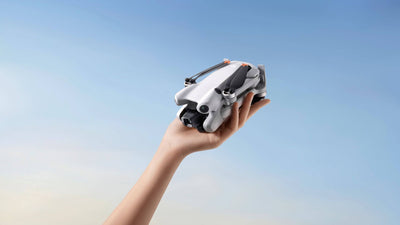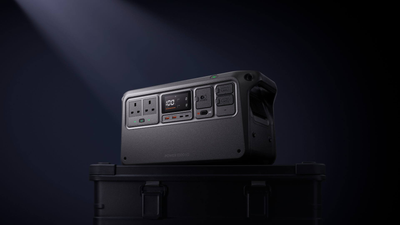How Are Drones Used In Agriculture?
- by Stefan Gandhi
Agriculture is no longer confined to tradition and weathered tools. Today, the UK’s farming sector is entering a bold era of precision and automation, with drones at the forefront of this transformation. What began as an experimental tool for aerial imaging has evolved into a multi-functional asset with proven value across the agricultural landscape.
From soil analysis and crop health monitoring to spraying and livestock tracking, drones are reshaping how farms operate. Their versatility, data capabilities and ability to perform repetitive tasks at scale make them essential to the modern farming toolkit. In this article, we break down the core ways drones are used in agriculture and why professional operators are turning to advanced platforms like the DJI Matrice 350 RTK and DJI Matrice 400 to get the job done.
Aerial Imaging and Mapping
One of the earliest and most widespread agricultural applications for drones is aerial imaging. By capturing high-resolution images from above, farmers and agronomists can generate accurate field maps that help in identifying terrain issues, soil variability and crop distribution.
These maps are not only useful for visual inspection. When paired with photogrammetry software, they become powerful tools for generating 2D orthomosaics and 3D terrain models. This level of data can inform everything from drainage planning to the precise placement of irrigation systems.
The DJI Matrice 350 RTK, equipped with RTK positioning, delivers centimetre-level accuracy, making it ideal for creating reliable maps even in complex environments.
Crop Health Monitoring
Drones equipped with multispectral and thermal sensors are redefining how farmers assess crop health. Instead of walking the fields or relying on guesswork, operators can fly drones to capture NDVI (Normalised Difference Vegetation Index) and other spectral data that highlights plant stress, disease or nutrient deficiencies.
These insights can be actioned quickly, reducing crop loss and improving yields. In larger operations, where manual inspections are inefficient, drones provide a scalable solution that delivers fast, field-wide diagnostics.
Advanced drones like the DJI Matrice 400 support interchangeable payloads, including multispectral sensors, allowing users to tailor their drone to specific agronomic tasks.
Precision Spraying and Spreading
Another growing use case is precision application. Spraying fertilisers, herbicides and pesticides with drones is becoming more efficient and targeted compared to traditional methods.
Drone-based spraying reduces chemical use, minimises soil compaction and allows access to difficult terrain where machinery cannot go. Operators can pre-program flight paths to apply exact amounts in specific locations, improving both environmental and financial sustainability.
The integration of GNSS systems and terrain-following sensors ensures consistent application regardless of topography. While DJI’s Matrice series is not a spraying drone in itself, it often forms the backbone of integrated systems when paired with dedicated spraying modules.
Soil and Field Analysis
Before seeds even hit the soil, drones can be used to analyse land viability. By conducting aerial surveys, farmers can assess soil moisture, texture and composition. This supports better decision-making when it comes to crop selection, fertiliser requirements and field preparation.
Some drone systems can also collect thermal data, providing additional insights into water retention and potential irrigation issues. The resulting data layers can be combined to create variable rate maps, guiding equipment to apply inputs more precisely.
Irrigation Management
Water management is a critical concern in agriculture, especially under increasing climate pressure. Drones help by monitoring large fields for signs of overwatering or drought stress.
Thermal imaging cameras detect temperature variances in crops, revealing areas where irrigation is either excessive or insufficient. These insights allow farmers to adjust irrigation schedules and infrastructure to conserve water and promote healthy growth.
With the DJI Matrice 350 RTK, users can combine high-precision flight with thermal payloads to produce actionable irrigation reports.
Livestock Monitoring and Management
Beyond crops, drones are also supporting livestock operations. By flying over fields and pastures, drones can check fencing, locate animals and monitor their behaviour without disturbing them.
In large or rugged terrains, drones save significant time and labour. Equipped with zoom cameras and thermal sensors, drones can track herds, identify injured or missing animals and verify livestock counts from a safe distance.
This improves not only operational efficiency but also animal welfare by enabling more frequent and less intrusive checks.
Planting and Seeding Applications
While still an emerging use case, some agricultural operations are experimenting with drones for precision seeding. This involves dropping seed pods directly into the soil in areas that are hard to access by tractor.
Such systems are particularly useful in reforestation or cover cropping projects, where soil disturbance needs to be minimal. Drones offer a low-impact method to plant efficiently at scale.
As drone payload technology matures, the potential for more widespread adoption of drone-based planting solutions continues to grow.
Data Integration and Decision Support
One of the most transformative aspects of drone use in agriculture is the ability to collect and integrate data from multiple sources. Imagery, sensor readings and geolocation data can be fed into farm management platforms for analysis.
This holistic view enables better decisions on planting schedules, fertiliser application and harvest timing. Drone data can also be layered with satellite imagery, machinery input and weather forecasts to deliver predictive insights.
For professional operations, platforms like the DJI Matrice 400 and 350 RTK become indispensable tools, feeding critical information into broader decision-making systems.
Compliance and Traceability
Regulatory compliance and traceability are growing concerns in agriculture. Drones assist by documenting field activities and inputs. Aerial imagery provides a visual record of spray events, irrigation changes and planting progress, all of which support audit trails.
For farms seeking accreditation or operating within controlled supply chains, having this digital record can simplify reporting and improve transparency.
By integrating these functions into a single aerial system, drones streamline workflows while enhancing accountability.
Training and Operational Efficiency
Operating drones in agriculture is not just about the equipment. Skilled pilots and data analysts are essential to extract full value. The DJI Matrice series supports a wide range of compatible software and training ecosystems, making it easier for agricultural teams to upskill.
The combination of intuitive control systems, modular design and advanced safety features ensures that even complex tasks can be performed efficiently in challenging environments.
This level of professional-grade capability is why more UK agribusinesses are incorporating drone operations into their standard practices.
Conclusion
Drones are not a gimmick in modern agriculture. They are powerful, data-driven tools that enhance how professionals manage land, crops and livestock. From imaging and mapping to spraying and analysis, drones offer significant time savings, operational efficiency and improved decision-making.
As drone technology continues to evolve, the ability to integrate aerial insights with farm management systems will redefine what is possible in precision agriculture.
For UK professionals seeking reliable, scalable and high-performance solutions, drones like the DJI Matrice 350 RTK and DJI Matrice 400 are setting the benchmark.
Looking to elevate your agricultural operations? Visit the Coptrz online store to explore the DJI Matrice 350 RTK and DJI Matrice 400, plus expert training and support tailored to the UK farming sector.




